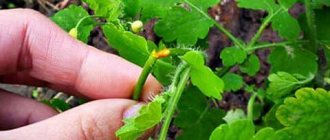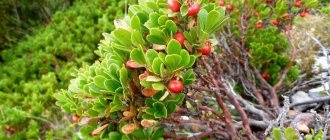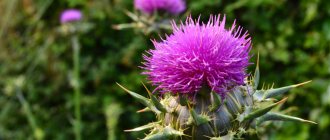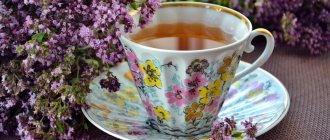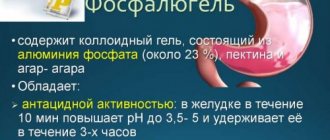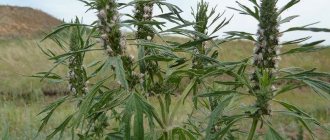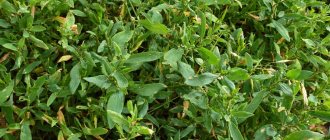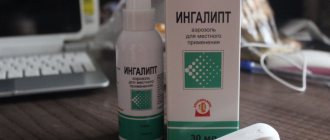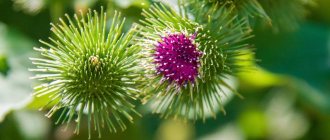Table of contents
- 5 beneficial properties of tansy inflorescences
- Who is contraindicated for tansy?
Fragrant round plate-inflorescences are branched into yellow shields, like bunches of rowan. Meet the common tansy. By the way, the comparison of tansy with rowan has been going on since ancient times, because other names for tansy are: wild rowan, yellow rowan and field rowan.
This bright herbaceous plant blooms in the central zone of our Motherland from June to September. It must be said that tansy is widespread everywhere, except in the Far North.
An indispensable inhabitant of the fields, tansy has many beneficial properties. In former times, tansy was used to get rid of intestinal parasites, Giardia. Tansy is capable of defeating many bacteria and stopping their reproduction, i.e. It can be classified as an antibiotic plant. Tansy flowers have an unusually beneficial effect on the liver and bile ducts, and also have an immunomodulatory effect.
The healing properties of tansy are explained by the chemical composition of its inflorescences. The flowers contain 2% essential oil, flavonoids, phenolcarboxylic acids, bitterness tanacetin (from the Latin name for tansy Tanacetum), tannins (6%) and alkaloids. Tansy essential oil includes a number of substances that not only have beneficial properties, but are also poisonous, so when consuming tansy, the dosage must be strictly observed.
The tansy flower itself is unusually small. What we call a round flower is actually an inflorescence - a basket of small flowers. This can be clearly seen in macro photography:
To prepare round tansy inflorescences in the summer, you need to wait until it blooms and cut off no more than 2 cm of flower stalks. Next, separate the round yellow inflorescence plates from the stems. In this form, the raw materials are dried by natural drying.
So, it’s time to list the beneficial properties that tansy has on the entire body.
Description of tansy
This is a herbaceous plant with a bright and specific odor. Tansy is also popularly called wild rowan. The plant can be distinguished from other species by its yellow flowers, which are collected in baskets. It can be seen at the end of June. It finishes blooming in the first half of October. Tansy is an unpretentious plant: mountainous or steppe areas, clearings or meadows, and wetlands are where the medicinal plant spreads. Wild rowan is found near rivers, in fields, in forests, along the road - these are the most suitable habitats for it.
Medicinal properties
The preparations that include tansy have comprehensive medicinal properties on the human body, for example, anthelmintic, choleretic (for liver diseases), antimicrobial and antispasmodic.
Together with other herbs, tansy is used as a natural antidote for nitrate poisoning.
The plant has an effective effect on the body during allergic reactions in cases where provoking factors have not been identified.
Tansy contains essential oils that relieve inflammation and enhance the ability of tissues and the mucous membrane of the gastrointestinal tract to regenerate. In combination with other medicinal herbs, tansy helps cure gastric and duodenal ulcers. It is also used to enhance bile secretion in diseases such as cholangitis, cholecystitis, liver cirrhosis, and viral hepatitis.
The diuretic properties of the plant help with inflammation of the bladder and kidneys, ascites.
Properties and uses of tansy
What is tansy? This is a perennial herbaceous plant of the Asteraceae family, which belongs to the genus Tansy. It has a long branching creeping woody rhizome. An adult plant reaches 50–150 cm in height. The stems are branched in the upper part, the leaves are alternate with 5–12 pairs of pointed leaves. The flowers are small, yellow, collected in baskets, which are combined into inflorescences. It has a characteristic camphor smell. Begins to bloom in July, ripens in August–September.
Where does tansy grow? The grass is distributed throughout Europe, in Asian countries - Kazakhstan, Kyrgyzstan, China, Mongolia, Korea, Japan. It grows everywhere: in fields, meadows, forests, gardens, near roads. Tansy can be aggressive towards other plants, so it is grown away from ornamental crops.
Properties and uses of tansy: Pixabay
The benefits of the plant are determined by its composition. In herbal medicine, flower baskets and the green part of tansy are used. Vitamins, essential oils, proteins, organic acids and other substances give them medicinal properties. Tansy has a long history of use in traditional and folk medicine, especially, as noted medical researcher Anil Pareek writes, among Greek and early European herbalists.
How is tansy useful? It has the following effects on the body:
- Destroys parasites. Used as a remedy against worms, pinworms, roundworms. The anthelmintic properties of the plant are recognized by scientific medicine. Doctor, researcher Nina Devrnya writes that tansy essential oil has also shown effectiveness in combating parasites in fields, so it can become an environmentally friendly alternative to pest control products.
- Strengthens the secretion of bile. It is used as a choleretic agent for diseases of the liver and biliary tract.
- Improves intestinal motility. Useful for gastrointestinal diseases, helps normalize digestion processes, increases the acidity of gastric juice.
- Strengthens the immune system. Increases the body's protective properties, its ability to resist bacteria and viruses.
- Relieves spasms, relieves pain. Relieves pain from gastritis, peptic ulcer, cholecystitis, biliary dyskinesia.
- Fights inflammation. Has an anti-inflammatory effect for rheumatism, gout, arthritis.
- Acts as a diuretic and laxative. Relieves swelling, helps with constipation and hemorrhoids. Used for urolithiasis and kidney inflammation.
- Has a calming effect on the nervous system. Used for epilepsy, anxiety attacks, nervous exhaustion.
- Heals wounds. Helps cope with festering wounds and ulcers due to its antibacterial effect and accelerating tissue regeneration.
- Normalizes the menstrual cycle. In gynecology it is used to restore menstruation and its volume.
To benefit from tansy, you need to take into account the specifics of its use and the recommendations of doctors.
Collection and preparation
The first thing you need to consider is that the collection must be carried out when the plant is blooming. It is necessary to collect tansy in an ecologically clean area, since excessive pollution negatively affects its beneficial qualities. Drying must be done in a dark place so that the plant is blown with fresh air. It is advisable to spread the tansy in a thin layer; during mixing, care should be taken not to damage the inflorescences. Tansy inflorescences should be yellow, have an unusual smell and a bitter taste.
Tansy has many beneficial properties that are used to treat many chronic diseases. If you follow all the rules when harvesting, the medicinal qualities of the plant are preserved for three years.
Where else is tansy used?
Tansy flowers.
Photo: Pixabay But tansy is used and used not only for medicinal purposes. Tansy in central Russia was used to preserve meat - meat carcasses were covered with grass.
Tansy leaves can replace cinnamon, nutmeg and ginger. Therefore, they are used as spices in the production of canned food, liqueurs and confectionery.
Since ancient times, tansy has been used to combat cockroaches, bedbugs and other insects. But the insecticidal effect of the plant on insects is weaker than, for example, that of peretrum.
Recipes from traditional healers
The baskets of the plant can be used to prepare powder, tinctures or decoctions:
- The powder is used to treat the gastrointestinal tract. Take 1 gram of powder 3 times a day. To eliminate the bitter taste, you can add honey.
- A tincture of tansy flowers is used for headaches, rheumatism, and also as a remedy against fever. 1 teaspoon of dried flowers is poured into 0.5 liters of boiled water. Leave for about 1 hour. Take half a glass orally no more than three times a day.
- To expel helminths from the body, brew a stronger infusion of tansy; it should be taken 3 times a day, 1 tablespoon. The same dosage is used for liver pathologies and gastrointestinal diseases.
Recipes for parasites
To get rid of parasites living in the intestines, you need to prepare the following decoction:
- Place 1 tablespoon of flower baskets in a vessel.
- Pour one glass of boiled water.
- Leave to steep for 4 hours, covered.
Take the decoction up to 4 times a day until the symptoms of infection disappear.
Recipes for eliminating female diseases
To eliminate the symptoms you need to:
- St. John's wort herb, yarrow and tansy baskets in the amount of 1 tablespoon, pour two glasses of boiling water. Leave the collection for 25 minutes, then cool and strain. The resulting solution is suitable for douching.
- Colpitis and leucorrhoea are treated with a decoction prepared in a water bath (25 minutes) in the proportion of 1 tablespoon of tansy inflorescences per glass of boiling water.
- During a delay in menstruation, the tincture is prepared as follows: pour 5 g of dried plant flowers into a glass of boiling water and leave for about 45 minutes. Take the medicine three times a day, 1/3 cup.
- Menopause can be treated in this way: pour a tablespoon of dried flowers into a glass of boiling water, then leave for about 30 minutes. After cooling, the liquid is filtered.
Recipe for eliminating gastrointestinal diseases
Treatment with tansy is effective for gastritis, dysfunction of the duodenum, and enterocolitis. To prepare the decoction, add 1 tablespoon of dried flowers to 2 glasses of water and bring to a boil, boiling for 5 minutes. Then the broth sits for a couple of hours and is filtered.
Take half a glass three times a day before meals.
Recipe for eliminating symptoms of joint pathologies
The tansy plant is used for inflammatory processes, aching joints, rheumatism, and gout. A combination of the following herbs works well:
- tansy – 20-25 grams;
- horsetail – 15-20 grams;
- string – 25-30 grams;
- nettle – 5-10 grams;
- elderberry inflorescences and black currant leaves - 10-15 grams each.
Best materials of the month
- Coronaviruses: SARS-CoV-2 (COVID-19)
- Antibiotics for the prevention and treatment of COVID-19: how effective are they?
- The most common "office" diseases
- Does vodka kill coronavirus?
- How to stay alive on our roads?
The entire collection must be thoroughly mixed, then poured with cool water and boiled. The decoction is used for therapeutic procedures in the form of baths. The course of therapy includes from 10 to 15 procedures. Treatment is carried out every 3 months.
Recipe for dandruff
The content of tannins in tansy gives it the ability to fight fungal diseases on the scalp and their causes. There are several ways:
- 100 g of dry inflorescence is poured with 3 liters of boiled water and simmered for 10 minutes over low heat. Then the broth is infused in a closed container overnight. Then the tincture is filtered through cheesecloth.
- 100 g of dry inflorescence is poured with 0.5 liters of vodka and left for 2 weeks. The prepared tincture is rubbed into the hair roots.
The use of tansy against parasites
Worm infestation is a common disease. Modern medicine has learned to fight it with the help of drugs. Often such drugs cause mistrust among patients. In such situations, traditional medicine comes to the rescue. Among which are many recipes with tansy.
Why is it possible to cure with tansy?
Field ash or tansy is a perennial plant more than a meter tall with yellow inflorescences. It has long been used against worms. The leaves and flowers have a tart odor. For medicinal purposes, they collect it from mid-summer to September. Grass absorbs harmful substances from the atmosphere, which is why the collection is carried out far from roads and industrial enterprises. The blanks are dried in natural conditions, in places without sunlight. Such raw materials are suitable for use for 2-3 years and are rich in
- essential oils, camphor;
- vitamin C, organic acids;
- organic tannins, thujone.
The last of these substances is toxic. It paralyzes the worm. As a result, the parasite dies and is eliminated from the human body. The plant is so effective that the popular name glistnik has been assigned to it.
In addition to fighting helminths, the herb has beneficial effects.
- Relieves inflammation of the digestive organs.
- Stimulates gallbladder motility, improves bile discharge.
- Normalizes body temperature if its fluctuation is caused by helminthiasis.
- Helps rid the body of products produced by parasites.
Features of use
Tansy can be used in various types and combinations:
- Alcohol tincture. The product is recommended for use only by adults.
- Infusions are suitable for getting rid of the consequences of parasite infection.
- The decoction is indispensable in treating children for worms. The beneficial properties decrease under the influence of hot water, and the effect of the medicine becomes less aggressive.
- Powder is the most effective method. It settles on the intestinal walls, and the worms are exposed to it.
You can choose the right remedy after visiting a doctor. A parasitologist conducts an examination and prescribes tests to identify the species that has settled in the worm’s body.
1. Ascariasis is treated by using tansy tincture.
2. An enema of milk with worms and garlic fights enterobiasis.
3. Herbal mixtures such as wormwood and cloves can be used against tapeworms.
4. If the type of helminth is not determined, it is recommended to take the powder form of the plant and perform enema with decoctions.
Contraindications, undesirable consequences of taking tansy
Field ash contains many tannins and toxins. It is important to follow the prescribed dosage. Reducing the amount of active substance reduces effectiveness and reduces medicinal properties. An increase can cause hallucinations, complications from the nervous and digestive systems.
Restrictions on the use of the plant
- Tansy contains substances that in some cases can be dangerous.
- Wormworm increases the tone of the uterus. While expecting a baby, this creates the risk of miscarriage or premature birth.
- The plant makes mother's milk taste bitter, which is why breastfeeding is stopped.
- You should avoid tansy products if you have pathologies of the digestive system, urinary system, or high blood pressure.
- A serious contraindication is the presence of oncology.
- There are known cases of individual intolerance.
- Tansy is not used for children under 7 years of age.
Side effect
- An incorrectly selected dosage leads to unpleasant symptoms. Appears:
- feeling of nausea;
- urge to vomit;
- constipation;
- painful sensations in the abdomen;
- increase in blood pressure;
- heart rhythm disturbance.
Recipe for effective remedies
Herbal mixtures with tansy or a plant without adding additional components are used against helminthic infestations.
Powder products
Dried flowers are ground in a coffee grinder or ground with a pestle and mortar. The finished powder is stored in a place protected from moisture and light. This type of cooking is only suitable for adults. It is used in several ways.
- Twice a day, 5 g, washed down with clean water. It is recommended to eat food no earlier than 20 minutes later. The course lasts a month.
- The required dosage of powder is placed inside the lump of bread crumb. Swallow whole so that the medicine gets directly into the intestines.
- Add honey to 1/3 spoon of crushed inflorescences. After swallowing, wash down with water.
- Take tansy 10 g, wormwood seeds 3 g and clove buds 5 g, crush and mix. The resulting mixture begins treatment with 5 g of the product on an empty stomach. The next day the number of doses is doubled. Starting from the 3rd day, they switch to using the powder 3 times a day. Duration of therapy is 10 days.
Enema refill
- A decoction for enema is prepared from flowers and seeds of the worm. Take Art. spoon of the plant, 0.5 liters of liquid, boil for a quarter of an hour. After cooling, do an enema: 1 time daily for 7 days in a row. Adding milk and garlic enhances the effectiveness. Boiling time is reduced to 10 minutes. The product is not allowed to cool. The temperature should be high, but not cause discomfort.
- An infusion of wormwood, wormwood, and chamomile is also suitable for enemas. 0.075 kg of plants need to be brewed with boiling water. After cooling, add the grated clove of garlic and leave for another 3 hours.
- To achieve a greater effect, it is advised that before giving an enema, take a laxative to empty the intestines.
Tinctures and decoctions
- An infusion of 0.050 kg of cut inflorescences per liter of boiling water helps fight pinworms and roundworms. The brewed herb is left in a thermos. After 4 hours, treatment can begin. Take before breakfast, before lunch and before dinner. Duration 3 days.
- Buckthorn bark and tansy flowers are also used to prepare the tincture. Pour 1 tbsp into a glass of boiling water. spoon of plants. All you have to do is let the product sit for 5 minutes, then filter it and drink it. Course therapy lasts 5 days.
- To prepare the decoction, the inflorescences are brewed; 1.5 tbsp is required per liter of water. l. tansy. Simmer in a water bath, then cool and filter. The prepared decoction is drunk before meals. Adults are recommended to take a glass, children 1 spoon three times a day.
Herbs for treating a child
It is permissible to use a folk recipe for treating children only after consulting a doctor. Pediatricians prohibit the use of worm for children under 7 years of age. The plant is consumed exclusively in conjunction with dietary food.
- Centaury, field ash and immortelle are mixed and poured with boiling water. Honey is added to the finished tincture - 0.045 liters per 1 spoon. The product is offered to children no more than 3 times a day, for no longer than 5 days. After this, be sure to feed the child milk porridge. Cereals can be any: oatmeal, barley, semolina.
- The use of tansy can be considered safe if there are no contraindications. The treatment will be beneficial if used correctly. Exceeding the dosage threatens poisoning of the entire body and deterioration of well-being.
In our online store you can buy tansy, as well as other herbs and ready-made preparations to combat parasites. To do this, follow the link below:
Contraindications
Tansy has some contraindications that negatively affect women during pregnancy and can cause miscarriage. It is also not recommended to use decoctions and tinctures to treat children, as the plant contains toxic substances. Therefore tansy is prohibited for children!
Before taking a folk remedy, you must consult with your doctor. Excessive use and incorrect dosage lead to stool disorders, vomiting and convulsions.
More fresh and relevant information about health on our Telegram channel. Subscribe: https://t.me/foodandhealthru
We will be grateful if you use the buttons:
